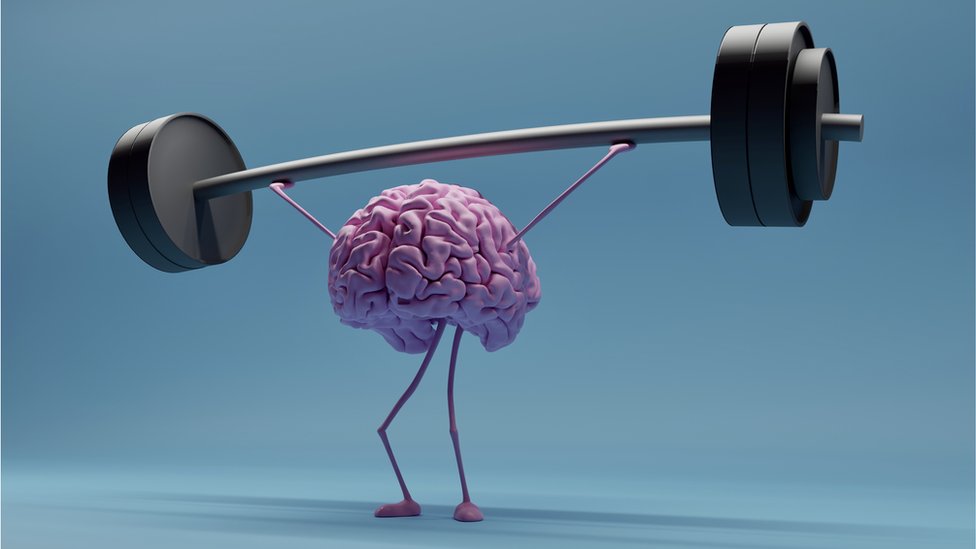
How the Brain Learns? Improve Your Gym Workouts
How the Brain Learns? Improve Your Gym Workouts Unlock your gym potential by understanding how the brain learns.
Increasingly, science is revealing the incredible secrets behind how the brain functions. By delving deeper into this complex machine, we discover that it plays a crucial role not only in the cognitive learning process but also in how we train and take care of our bodies.
Imagine if you could optimize your gym workouts simply by better understanding how the brain learns and adapts!
In this article, we will delve into the realm of neuroplasticity, exploring its connection to routines and repetitions, and show you the powerful link between what we think and what our bodies execute.
Neuroplasticity: The Brain’s Ability to Change and Adapt
Neuroplasticity, also known as brain plasticity, is the brain’s ability to reorganize itself in response to new experiences, learning, injuries, and various other situations. This characteristic has profound implications for recovery after brain injuries, learning, and the brain’s adaptability to changes throughout life.
Mechanisms of Neuroplasticity
Synaptic Plasticity
This refers to the brain’s ability to strengthen or weaken connections between neurons (synapses) in response to activity. When a specific neural pattern is frequently activated, the synapses associated with it are strengthened. This is the basis of the famous saying, “neurons that fire together, wire together” (Hebbian theory).
Neurogenesis
For a long time, it was believed that adults could not generate new neurons. However, research has shown that in certain areas of the brain, such as the hippocampus, new neurons can be formed throughout life, a process called neurogenesis.
Routine and Variety for the Brain and Muscles
Routine and variety are crucial concepts when it comes to brain and muscle health. Both have their advantages and disadvantages, depending on the context and goal. Let’s explore how these strategies affect the brain and muscles and how they can be used to maximize health and performance.
For the Brain
Benefits
Establishing a daily routine can help reduce stress and anxiety as it provides predictability and structure. Routine can improve efficiency since the brain becomes accustomed to performing specific tasks at specific times.
Drawbacks
Excessive routine and a lack of new stimuli can lead to mental stagnation and a lack of creativity. The brain needs challenges and novelty to remain active and healthy.
For the Muscles
Benefits
A workout routine allows muscles to adapt and strengthen in response to specific stimuli. Regularity in training is essential for consistent strength and endurance gains.
Drawbacks
Continuously training the same muscle groups with the same exercises can lead to plateaus (stagnation in gains) and increase the risk of overuse injuries.
Benefits and Characteristics of Variety
Now let’s explore how the brain perceives variety and whether it has advantages over routine.
For the Brain
Benefits
New stimuli and challenges drive neuroplasticity, the brain’s ability to reorganize and form new neural connections. Variety can also enhance creativity and problem-solving abilities.
Drawbacks
Constant changes without any routine can create stress and anxiety, as the brain lacks a predictable pattern to follow.
For the Muscles
Benefits
Variety in exercises ensures different muscle groups are worked and reduces the risk of overuse injuries. It can also help overcome plateaus as it challenges the muscles in new ways.
Drawbacks
Frequently changing exercises without a clear strategy can prevent muscles from receiving sufficient stimulus to adapt and grow.
Mind and Body Connected: Mental Focus and Physical Performance
The connection between the mind and body is a deeply studied topic in various disciplines, including medicine, psychology, and philosophy. This relationship is particularly evident when we observe the interaction between mental focus and physical performance.
Mental Focus
The ability to concentrate and maintain attention on a specific task or activity can significantly enhance physical performance. For example, an athlete who is focused on their technique or strategy is more likely to have a successful performance than someone easily distracted.
Visualization
Many athletes use visualization techniques to improve their performance. Imagining oneself executing a technique perfectly or visualizing success in a competition can create a neural pattern that facilitates the action in the real world.
Growth Mindset
Believing that skills and talents can be developed through effort and dedication can positively impact training and physical performance. Individuals with this mindset are more likely to tackle challenges and persevere in the face of adversity.
Emotional State
A person’s emotional state can influence their physical performance. For example, anxiety can cause muscular tension, affecting movement execution, while confidence can enhance efficiency and the accuracy of movements.
Posture
How we position and move ourselves can influence our mental state. An upright and confident posture can increase feelings of self-esteem and power, while a slouched posture can lead to feelings of depression or low energy.
Breathing
Breathing techniques are often used in meditation and yoga to calm the mind. Deep and rhythmic breathing can reduce anxiety and improve concentration.
And these are the ways in which the mind and body connect in pursuit of the best results. Understanding neuroplasticity and how your brain seeks to stimulate muscle results is the first step toward achieving the goals you desire in your workouts.
Do you want to maximize your results at the gym and have a deeper understanding of how your brain and body interact? Keep reading our blog to discover strategies capable of unlocking your maximum potential, both mentally and physically.
Thank you for joining us, and until next time!
Sooro Renner – Nutrition that Generates Results.